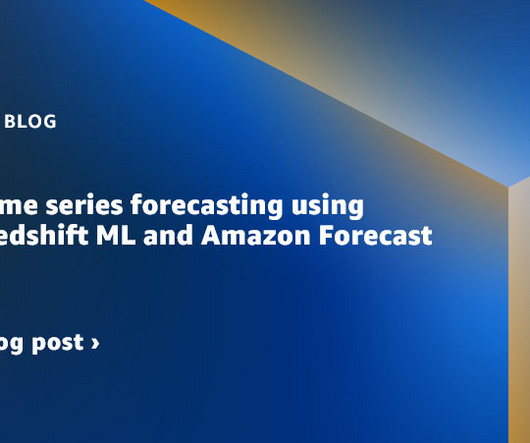Perform time series forecasting using Amazon Redshift ML and Amazon Forecast
AWS Big Data
AUGUST 7, 2023
Forecasting acts as a planning tool to help enterprises prepare for the uncertainty that can occur in the future. The data contains measurements of electric power consumption in different households for the year 2014. Prepare the data Refer to the following notebook for the steps needed to create this use case.














Let's personalize your content